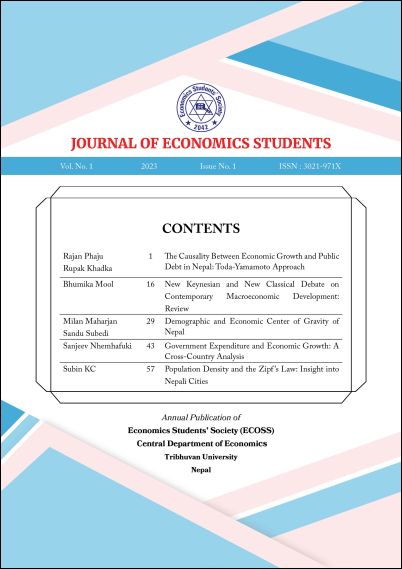Population Density and the Zipf’s Law: Insight into Nepali Cities
DOI:
https://doi.org/10.3126/joess.v1i1.65692Keywords:
Zipf's LawAbstract
This paper is focused to show there is population agglomeration in the context of Nepal along with a brief insight into other countries of the South Asian region on population agglomeration, also suggests some policy recommendations to accept the population agglomeration wisely. This study is a qualitative study that is conducted majorly reviewing the available literature. The finding of this paper suggests the population density of the major cities of Nepal follows Zipf’s Law closely with an R2 value of 0.958. It is observed that the concentration of population in a certain city is very high. Due to this population concentration, a particular city may face numerous problems. And, such population concentration doesn’t come only with problems, there are some benefits that we can obtain from this concentration also.
Downloads
Downloads
Published
How to Cite
Issue
Section
License
Copyright (c) 2023 The Author(s)

This work is licensed under a Creative Commons Attribution 4.0 International License.
This license enables reusers to distribute, remix, adapt, and build upon the material in any medium or format, so long as attribution is given to the creator. The license allows for commercial use.




